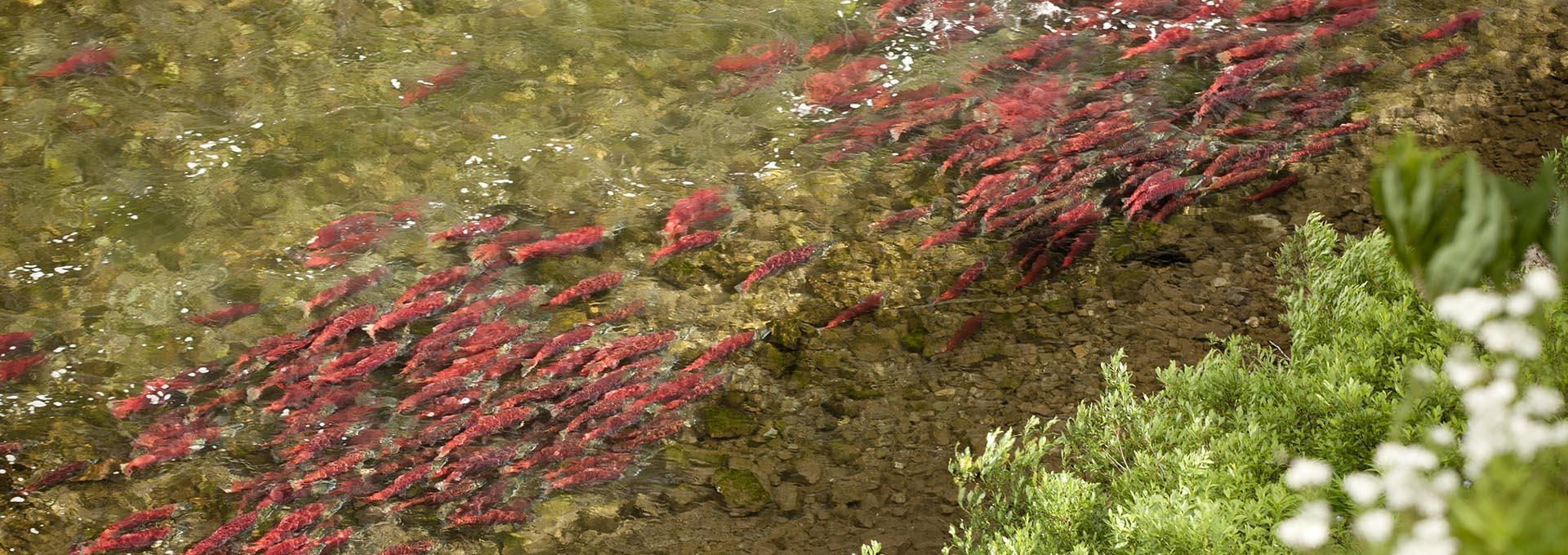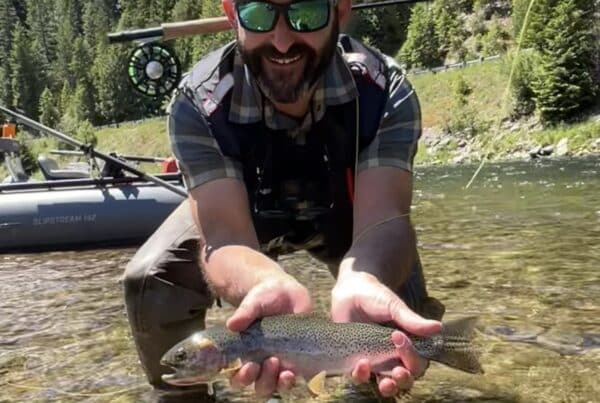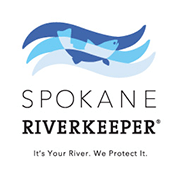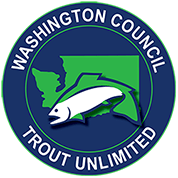”This is evidence of the blatant and illegal stonewalling of the court ordered process (for the 5th time) to conduct an unbiased Environmental Impact of the operation of the Columbia/Snake River operation by the Federal agencies.
Harvey MorrisonSpokane Falls Trout Unlimited
 Federal Agency-led NEPA review set to miss a critical opportunity for endangered salmon and orcas, for Northwest energy and communities.
Federal Agency-led NEPA review set to miss a critical opportunity for endangered salmon and orcas, for Northwest energy and communities.
Save Our wild Salmon Coalition – September 2019
SUMMARY: Three federal agencies – Army Corps of Engineers, Bonneville Power Administration and Bureau of Reclamation – are now working to complete a court-ordered National Environmental Policy Act (NEPA) review that should detail all credible recovery alternatives for wild salmon and steelhead endangered by the federal system of dams and reservoirs in the Columbia-Snake River Basin. Recent information demonstrates clearly that this process is being badly manipulated – with pre-determined outcomes, skewed analyses, and significantly limited opportunities for public input.
As a result of decisions by these agencies, people of the Northwest and nation will miss a critical opportunity to develop a legally-valid, scientifically-credible Columbia Basin salmon plan required to protect Snake River salmon and Southern Resident orcas from extinction and assist struggling fishing economies regionally. An inadequate and illegal NEPA review and federal salmon plan will only increase uncertainty, risk and cost for the people and communities of the Northwest – and perpetuate a failing and expensive status quo.
DETAILS: In spring 2016, the U.S. District Court in Portland (OR) invalidated the federal agencies’ 2014 Biological Opinion for salmon and steelhead endangered by the federal dams and reservoirs on the Columbia-Snake rivers. This is the fifth consecutive plan to be rejected by the courts since the 1990s. Despite spending more than $16B over the past two decades, the government has so far failed to recover any of the thirteen wild salmon and steelhead populations in the Columbia Basin at risk of extinction today.
Soon after its 2016 ruling, the Court ordered the agencies to produce a new environmental review (EIS), as required by NEPA, and a new salmon plan. Salmon and orca advocates hailed this decision as a critical opportunity to re-examine important issues, update relevant information (science, energy, economics, etc) and embark in a new direction – one that would both (i) protect imperiled Columbia Basin fish populations and the benefits they provide and (ii) identify and detail projects and investments to address the needs of those affected by the kinds of major actions needed to rebuild salmon populations – such as restoring the lower Snake River by removing its four federal dams.
Over the past year, it has become clear that the integrity of this process is being actively undermined – critical decisions have already been made and outcomes pre-determined. Transparency is largely absent and public participation and input has been severely limited and often ignored. Consider these examples.
- NOAA spokesperson admits that FEIS outcomes have been determined. Aug. 20, 2019. A recent article from the Business Institute of Washington confirms fears that the NEPA process outcomes have already been determined and the federal agencies will repeat costly and illegal mistakes of the past.
Although it is still seven months before the DEIS will be released – and prior to any public review or input, The Lens reports that “’new conclusions won’t be much different than past studies as to whether the dams should be breached.’ NOAA Fish Ecology Director Rich Zabel stated, ‘I would say at this point we’re not recommending it. I would say we are interested in exploring habitat restoration. Breaching the dams would take an act of Congress, so I think in the short run we’re interested in pursuing as many activities outside of breaching dams.’”
- Federal Agencies’ announce deeply flawed EIS Alternatives, including a failure to address climate impacts or impacts on endangered orca. May 16, 2019 (www.crso.info). This spring federal agencies released their five alternatives: (i) status quo/no action, (ii) power-friendly, (iii) irrigation-friendly, (iv) dam spill at 125% total dissolved gas and (v) Snake River dam removal. Notably, the first three alternatives would, if selected, provide river conditions that would increase harm and mortality for already-endangered fish compared to current conditions. In their new 20-minute online presentation, the agencies fail to acknowledge or address climate impacts on salmon – a top concern for many scientists and the Court – or make mention how endangered orcas will be affected by the various alternatives. This presentation on the EIS – and the direction and priorities it reflects – have been corroborated by numerous agency staff.
III. Council on Environmental Quality’s letter to Members of Congress omits mention of salmon, emphasizes a ‘commitment to water infrastructure’. May 14, 2019.
Early in 2019, ten members of Congress wrote CEQ with concerns about the NEPA review relating changes ordered by the Administration in late 2018 (see IV below) that truncates the EIS schedule set by the court and sharply limits public participation and stakeholder input. CEQ’s letter failed to address the compressed schedule and its likely effects, ignored many concerns identified by policymakers, failed to mention “salmon”, and communicated a commitment only to ‘important water infrastructure and…supply and delivery of water in the Western United States.”
- Trump Administration Directive to compress EIS timeline – Oct. 23, 2018.
Two weeks prior to the 2018 midterm elections, the administration issued a directive to federal agencies preparing the EIS requiring them to “develop a schedule to complete the Columbia River System Operations (CRSO) Environmental Impact Statement (EIS) and associated biological opinion by 2020” – well in advance of the fall 2020 elections.
This directive was issued despite unequivocal testimony by the federal agencies to the Court in 2016 that they required five years or more to complete a full, fair EIS. The Court subsequently granted the agencies this time – setting a deadline of March 2021 for a new plan. In response to the administration directive, in early 2019, the agencies announced a new NEPA 2020 timeline: DEIS by Feb., FEIS by June and a Record of Decision by Sept. The main casualties of this new timeline: the opportunity for public input and consideration of it by the agencies.
- The EIS will ignore the public’s support for protecting Snake River salmon and Southern Resident orcas from extinction.
Finally, the value the public places on restored salmon and healthy orcas will not be reflected in the EIS. The Army Corps will exclude consideration of the economic value that the public places on protecting these species from extinction. Consideration of what economists call “non-use values” is required by federal EIS guidelines and standard practice in economic analyses both in the federal government and private sector. The Army Corps will omit these values even though the Bureau of Reclamation requires them to be included and considered.
For further information, contact Joseph Bogaard, [email protected], 206-300-1003

















